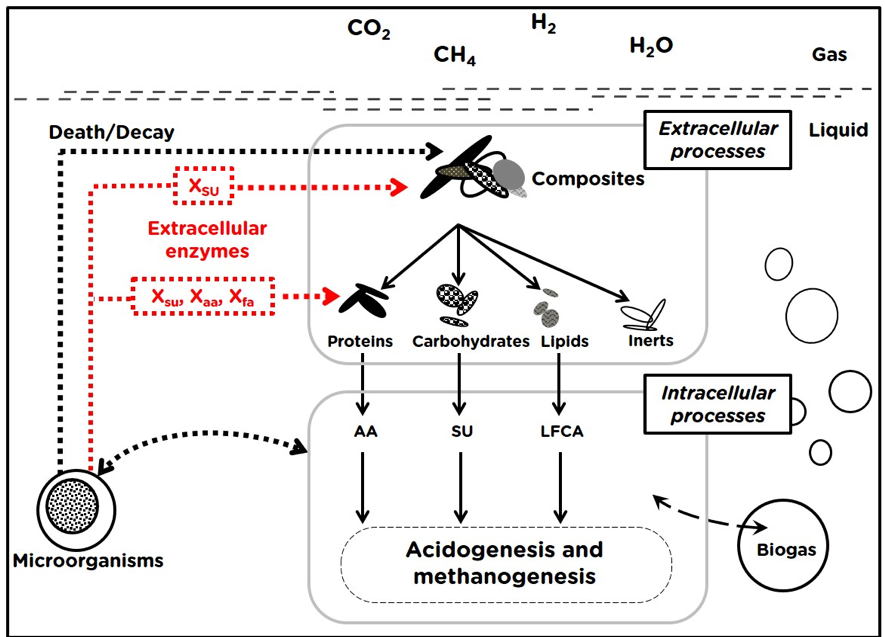 |
|
A new model of the stages of disintegration and hydrolysis, and co-digestion process following the classical Anaerobic Digestion Model No.1 (ADM1) structure is proposed. In the new method, substrate-microorganism relationships are represented using the Contois equation rather than the first order models previously used to represent substrates in the degradation process. This model was validated by assessing the biogas production from the co-digestion of vegetable (V) and manure (M) with variations in the V/M ratio in the feed. The highest biogas and yield levels were obtained when the feed ratio was 50/50 V/M. This finding was reproduced by running simulations of the original and modified ADM1. The original ADM1 explains the low digestibility and utilization of manure for biogas production as a consequence of a slow disintegration or hydrolysis stage, which depends exclusively on the disintegration and hydrolysis constants used. The new model offers a more mechanistic explanation; it assumes unfavorable substrate-microorganism relationships, which cause disintegration to become a limiting factor in the process. In addition, biogas production in the new model is primarily associated with carbohydrate degradation, as well as low concentrations and rapid consumption of intermediary metabolites, which do not favor the proliferation of acetanogenic or methanogenic communities.
Keywords: Anaerobic digestion, ADM1, co-digestion, hydrolysis, cattle manure.
|
|
 |

